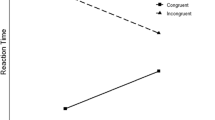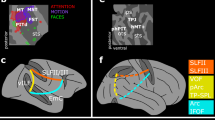Abstract.
The attention system can be viewed as a collection of modules each of which contains two components: the expression of attention and the controlling operations that produce that expression. Current theories place sites of attentional control in the anterior cortex and sites of expression in the posterior cortex. Attention to a particular location or appearance of an object is itself controlled by instruction from a supervisory system, by the pointing of an arrow cue, and by bottom-up abrupt onsets of stimuli. The control of attention is regulated by cognitive activities such a cognitive load, error monitoring, and current goals. A new development of the triangular circuit theory, together with supporting data, suggest the existence of two modes of activity in columns of attentional expression: brief enhancement of pulse processing that selects information, and prolonged fast oscillations that sustain attention during preparatory and maintenance attention. It is proposed that the direct pathway of the triangular circuit controls the selection of information in the brief attention mode while the indirect pathway through the thalamus controls the production of fast oscillations in the prolonged attention mode.
Similar content being viewed by others
Author information
Authors and Affiliations
Additional information
Electronic Publication
Rights and permissions
About this article
Cite this article
LaBerge, D. Attentional control: brief and prolonged. Psychological Research 66, 220–233 (2002). https://doi.org/10.1007/s00426-002-0097-2
Accepted:
Issue Date:
DOI: https://doi.org/10.1007/s00426-002-0097-2




